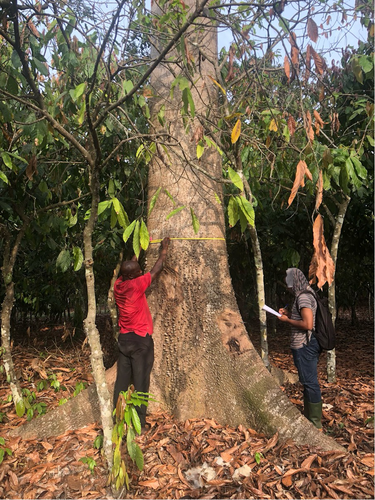
THIBAUT Bernard
- INSIS, CNRS Délégation Languedoc-Roussillon, Montpellier, France
- Biology of wood in living trees , Silviculture and forest management, Wood properties and wood products
- recommender
Recommendation: 1
Reviews: 0
Recommendation: 1

Tree growth in West African cocoa agroforestry systems : high timber yields and superior performance of natural regeneration
Allowing natural forest regeneration to provide shelter for cocoa trees in tropical agroforestry
Recommended by Bernard Thibaut based on reviews by Tancrède Alméras and 1 anonymous reviewerScientific context
A large part of deforestation in Ivory Coast is due to cocoa plantations, but the need for timber is increasing with population growth. A good compromise for farmers should be for agroforestry to combine cocoa and timber income. Tree for timber management may come from natural regeneration by the large diversity of available seed stock in the cocoa plots, fostering the safeguarding of biodiversity (Vroh et al. 2019, Kouassi et al. 2024)
Questions, hypotheses, methodology
Besides trade-off with cocoa productivity, this very new way of practising agroforestry raises many questions about timber productivity, the geometry of trunks or timber quality in connection with population needs.
Agroforestry trees should be less slender with lower branches than forest trees. This was studied here by Kouassi et al. (2024) using a very large sampling (150 plots) that covered the whole cocoa production zone on the south Ivory Coast. The description of many trees, including diameter at breast height, log height and tree age, allowed accurate modelling of tree growth and building of growth trajectories for 23 species of commercial interest.
Main results and interpretations
Using modelled diameter growth and bole volume trajectories, associated with the ongoing rule for harvesting based on minimum logging diameter, makes it possible to predict timber harvesting at different ages of the cocoa plantation.
Moreover, natural regeneration proves to be more efficient than plantation using saplings, but logs are more conical and with lower branches than their counterparts in natural forests, as expected.
Recommendation
This is a very interesting paper on agroforestry for fruit (cocoa) and timber production, full of interesting data coming from a large number of study areas (150 plots) where both spontaneous (natural regeneration from past forest seeds) or planted fast-growing trees are used. Using a Bayesian scheme, models are built to predict (1) the changes in diameter with tree age, (2) the relationship between diameter and height, and (3) the relationship between tree dimensions and bole volume. Predictions about the change in bole volume with age are deduced from these models. This makes it possible to build scenarios for adding value to the wood produced by the agroforestry system, depending on the current or future technical and socio-economic context.
References
Kouassi AK, Zo-Bi IC, Hérault B, Konan IK, Dago MR, Lasbats B, Schmitt S, N'Guessan AE, Aussenac R (2024) Tree growth in West African cocoa agroforestry systems: high timber yields and superior performance of natural regeneration. HAL, ver.2 peer-reviewed and recommended by PCI Forest and Wood Sciences https://hal.science/hal-04638492
Vroh TA, Abrou NEJ, Gone BI, Adou Yao CY (2019). Système agroforestier à cacaoyers en Côte d’Ivoire : connaissances existantes et besoins de recherche pour une production durable. Rev. Mar. Sci. Agron. Vét. (2019) 7 (1): 99-109.